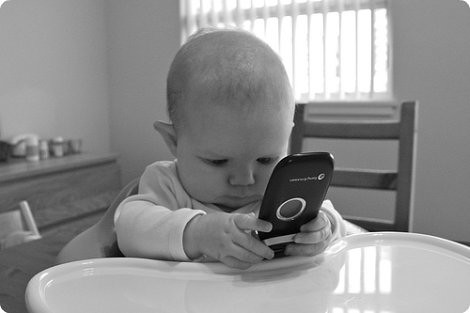

 - 2001 : Apple Ipod: Apple electric walkman. It's a walkman with a hard disk, which allows to download the music, here, with the MP3 format. The app iTunes was made in order to transfer simply the music on the Ipod.
- 2001 : Apple Ipod: Apple electric walkman. It's a walkman with a hard disk, which allows to download the music, here, with the MP3 format. The app iTunes was made in order to transfer simply the music on the Ipod.
 - 2004 : Facebook is a social media made by Mark Zukerbreg when he were still in the university of Harvard. The point of this social media was to communicate across the university exclusively. That's why it's named « Facebook ». Easily, the site will spread in the university and will finally be used all over the world
- 2004 : Facebook is a social media made by Mark Zukerbreg when he were still in the university of Harvard. The point of this social media was to communicate across the university exclusively. That's why it's named « Facebook ». Easily, the site will spread in the university and will finally be used all over the world
 - 2005 : Youtube: Originally, Youtube should have been a dating website based on the utilization of videos but the three creators gave up on this idea. One year later, Youtube was buy by Google and in 2007, videos aren't anymore in the Flash Video formats Flash Video but H.264, a format used by Apple
- 2005 : Youtube: Originally, Youtube should have been a dating website based on the utilization of videos but the three creators gave up on this idea. One year later, Youtube was buy by Google and in 2007, videos aren't anymore in the Flash Video formats Flash Video but H.264, a format used by Apple
 - 2006 : Twitter
is a social media where the messages must be short; Indeed there is a limit of 280 caracters. The app allows to post audiovisual files
- 2006 : Twitter
is a social media where the messages must be short; Indeed there is a limit of 280 caracters. The app allows to post audiovisual files
 - 2007 : iPhone :
The iPhone is a range of smartphone made by Apple. The first of the range is named the IPhone 2G. They all use the operating system, IOS.
- 2007 : iPhone :
The iPhone is a range of smartphone made by Apple. The first of the range is named the IPhone 2G. They all use the operating system, IOS.
 - 2008 : Android
is an mobile operating system made on the core Linux. We can consider it as a softwares pile, that we can separate in five parts : The core Linux, softwares libraries, an execution environment, a framework and a batch of standard apps.
- 2008 : Android
is an mobile operating system made on the core Linux. We can consider it as a softwares pile, that we can separate in five parts : The core Linux, softwares libraries, an execution environment, a framework and a batch of standard apps.
 Facebook, published by Meta in 2004
Facebook, published by Meta in 2004
 Twitter, published by Odéo in 2006
Twitter, published by Odéo in 2006
 Pinterest, published in 2010
Pinterest, published in 2010
 Instagram, published by Meta in 2010
Instagram, published by Meta in 2010
 Snapchat, published by Snap Inc. in 2011
Snapchat, published by Snap Inc. in 2011
 Discord, published by Discord Inc. in 2015
Discord, published by Discord Inc. in 2015

The computer development, and more generally, digital tools, has created a new psychological trauma; the Internet addiction disorder.
According to Eric Sadin, writer and philosopher, social networks have created the opposite of what was supposed to do. Indeed, these applications have brought to “community isolation” and to an impression of “self centrality”. We can take the example of Twitter, which gives a sense of “self primacy and acknowledge the speaking victory postulate on the action”. To summary, Twitter makes the illusion that our voice is more important than those of others. We also can cite Instagram, that Eric Sadin sees as “the ultimate platform reserved for self display. He even goes so far as to call the Instagrammer a "sandwich man", due to the continuous monetization of his person that Instagram enables him.
A report of Ined and Insem about the average passed time in front of screens by child has been published in early April 2023. We can learn in it that the time children have passed watching screens has increased and is higher than WHO sanitary recommendations. In order to realize this study, the two institutes have followed 18 000 children, and will continue during seven years, born in 2011. Thanks to these studies, we can see that daily screen time is about 56 minutes for two-year-old-children, 1h20 for three-and-a-half-year-old-children, and 1h45 for five-and-a-half-year-old-children. Averages a lot beyond WHO recommendations, who advises no screen time for children undre two years and only one hour for children between two and five years old. Unfortunately, these recommendations are followed by only 13,7% of surveyed parents for the study. The screen the most viewed by children is television, although it tends to reduce with the children growth, mainly at around three and a half years. For all that, it doesn’t mean this screen time lower with age; it is the opposite, it increases.
During this study, it has been noticed that mother’s study level and born place are decisive factors in children’s screen time. Indeed, it has been seen that children who have a high school leveled mother pass 45 minutes more at two years old and 1h15 more at five and a half years old than children who has bac+5 level. Moreover, children who have a mother born in the Maghreb, in Turkey or in Sub-Saharan Africa pass 30 to 50 minutes more on screens than children who have a mother born in France.
Despite everything, a certain realization is notable in eleven-to-twelve-year-old-kids, who are often already on social networks when the limit is thirteen. Indeed, 25% find they spend too much time on their phones, a number increasing, and 19% find their parents spend too much time on their phones. In addition, we can observe a care as for their personal data using and for private life protection because 80% maintain their accounts private on social networks and 52% know their parents geolocate them. Social networks ride the wave of illegality and acquisition of audience. Finally, it has been viewed that people don’t change platform with age, they grow with the app and make it progress, Facebook being a very good example for this process.